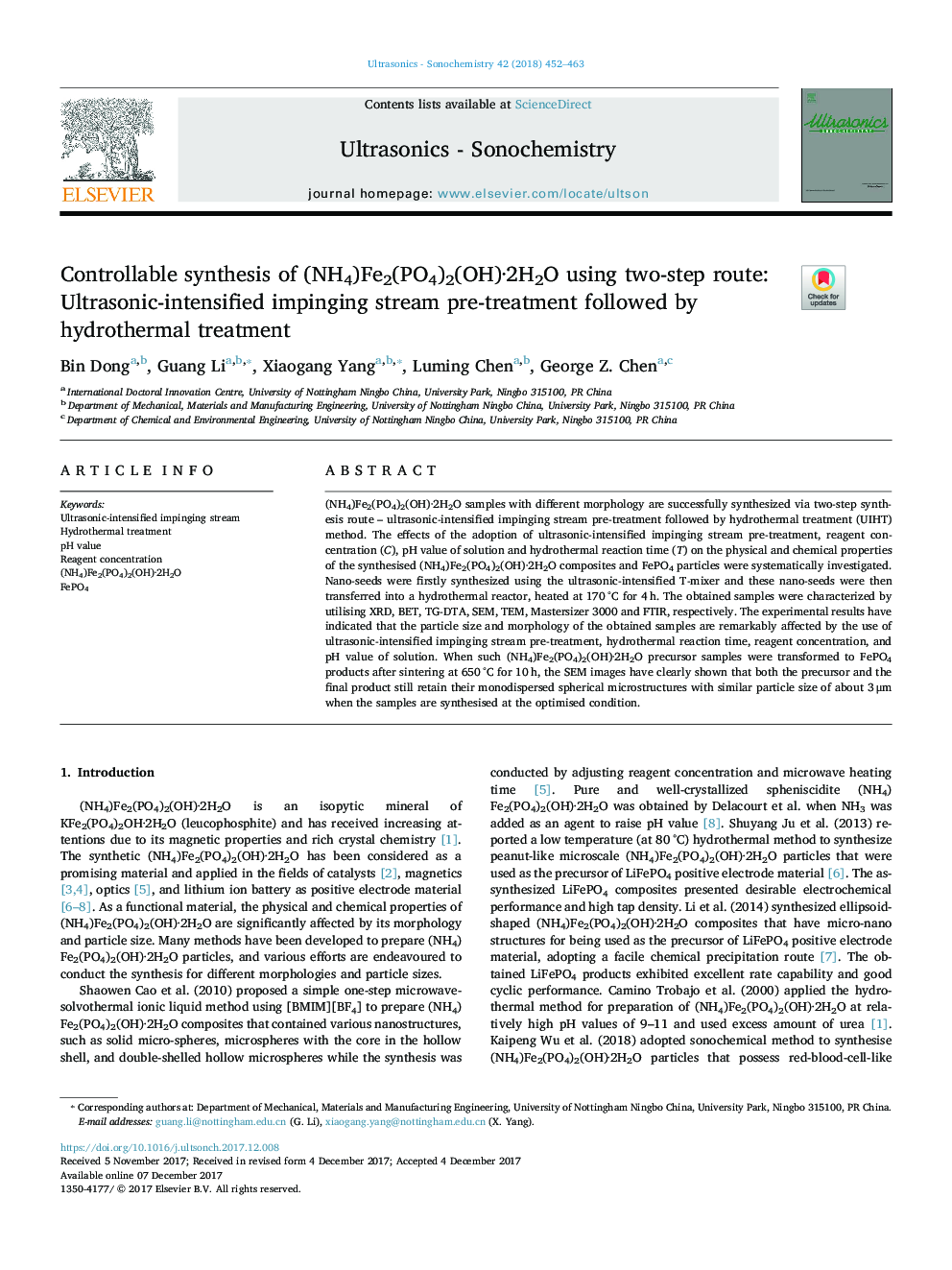| Article ID | Journal | Published Year | Pages | File Type |
|---|---|---|---|---|
| 7703319 | Ultrasonics Sonochemistry | 2018 | 12 Pages |
Abstract
(NH4)Fe2(PO4)2(OH)·2H2O samples with different morphology are successfully synthesized via two-step synthesis route - ultrasonic-intensified impinging stream pre-treatment followed by hydrothermal treatment (UIHT) method. The effects of the adoption of ultrasonic-intensified impinging stream pre-treatment, reagent concentration (C), pH value of solution and hydrothermal reaction time (T) on the physical and chemical properties of the synthesised (NH4)Fe2(PO4)2(OH)·2H2O composites and FePO4 particles were systematically investigated. Nano-seeds were firstly synthesized using the ultrasonic-intensified T-mixer and these nano-seeds were then transferred into a hydrothermal reactor, heated at 170â¯Â°C for 4â¯h. The obtained samples were characterized by utilising XRD, BET, TG-DTA, SEM, TEM, Mastersizer 3000 and FTIR, respectively. The experimental results have indicated that the particle size and morphology of the obtained samples are remarkably affected by the use of ultrasonic-intensified impinging stream pre-treatment, hydrothermal reaction time, reagent concentration, and pH value of solution. When such (NH4)Fe2(PO4)2(OH)·2H2O precursor samples were transformed to FePO4 products after sintering at 650â¯Â°C for 10â¯h, the SEM images have clearly shown that both the precursor and the final product still retain their monodispersed spherical microstructures with similar particle size of about 3â¯Î¼m when the samples are synthesised at the optimised condition.
Related Topics
Physical Sciences and Engineering
Chemistry
Chemistry (General)
Authors
Bin Dong, Guang Li, Xiaogang Yang, Luming Chen, George Z. Chen,
